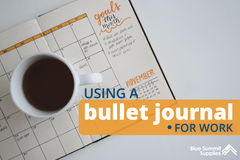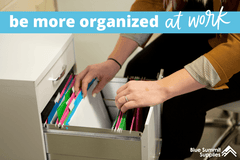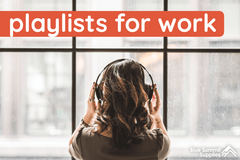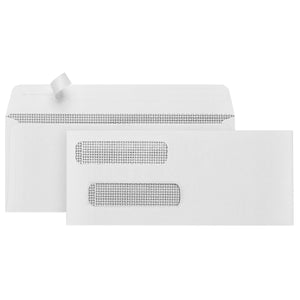![]() This article is part of a series from Blue Summit Supplies dedicated to getting you the information and resources your office needs surrounding COVID-19. It is critical that offices across our nation take swift action to protect their workers and prevent the spread of illness. The decisions we make have a direct impact on the health of those around us. Though it will be a challenge, changing our behaviors could save the lives of our friends, neighbors, and coworkers.
This article is part of a series from Blue Summit Supplies dedicated to getting you the information and resources your office needs surrounding COVID-19. It is critical that offices across our nation take swift action to protect their workers and prevent the spread of illness. The decisions we make have a direct impact on the health of those around us. Though it will be a challenge, changing our behaviors could save the lives of our friends, neighbors, and coworkers.
In this post, we’ll cover how COVID-19 spreads, why social distancing works, as well as best practices for social distancing at work. For more information about medical treatment and the current spread of COVID-19, visit The World Health Organization or The Centers for Disease Control.

A Refresher on the Spread COVID-19
Coronavirus Disease 2019 (COVID-19) spreads mainly from person-to-person, which means it’s spread between people who are in close contact, within about 6 feet. It’s also spread through respiratory droplets that are produced when an infected person coughs or sneezes. These droplets can land on other people or be inhaled.
The droplets can also land on surfaces, where COVID-19 can live for as long as 3 days. If a person touches a contaminated surface and then touches their eyes, nose, or mouth, that person can become infected with COVID-19. According to the CDC, “COVID-19 seems to be spreading easily and sustainably” in communities. This is known as a “community spread.”
Community spread occurs when a person becomes infected without knowing of any direct contact with an infected person. This could be through someone who doesn’t yet know they are infected or from a contaminated surface. The disease spreads quickly, rapidly infecting a number of people who live in the same area or community.
The most common symptoms of COVID-19 are:
- Fever
- Cough
- Shortness of breath
Symptoms of COVID-19 may appear anywhere from 2-14 days after exposure, which means someone could potentially spread the virus for up to two weeks without even knowing they’re a carrier.
So, what can businesses and individuals do to prevent the spread of COVID-19? The answer is social distancing.

What is Social Distancing?
The Centers for Disease Control (CDC) have suggested several mitigation strategies for communities designed to limit the spread of COVID-19.
One critical strategy is social distancing. Social distancing refers to an effort by individuals to reduce close contact with other people to limit the spread of disease. It’s a behavior adjustment that can lower your risk of transmitting or being infected by any disease, particularly COVID-19, which is transmitted mainly from person-to-person.
Since it can take up to two weeks before a person infected with COVID-19 notices their symptoms, avoiding contact with people is an important strategy to mitigate the spread of the virus.
Social Distancing Works
Though it’s only one of many behavioral changes we need to be making, it’s proven to be effective in preventing the spread of a virus.
The Spanish flu devastated the entire world in 1918. “The virus infected 500 million people worldwide and killed an estimated 20 million to 50 million victims.” It was a highly contagious and virulent strain of flu, and more dangerous than COVID-19. That said, it was also a person-to-person spread.
 In 1918, the city of Philadelphia decided to go forward with a parade to support the war effort despite warnings that it could encourage the spread of the Spanish flu. 200,000 people showed up, and three days later, all 31 of Philadelphia’s hospitals were filled with people infected by the Spanish flu.
In 1918, the city of Philadelphia decided to go forward with a parade to support the war effort despite warnings that it could encourage the spread of the Spanish flu. 200,000 people showed up, and three days later, all 31 of Philadelphia’s hospitals were filled with people infected by the Spanish flu.
By contrast, the city of St. Louis closed down schools, libraries, playgrounds, courtrooms, and churches within two days of detecting the first cases of the Spanish flu in their community. The extreme social distancing measures kept per capita flu-related deaths in St. Louis to less than half of those in Philadelphia.
Social distancing works. And everyone needs to practice it.
Best Practices For Social Distancing at Work
Maintain Distance
Maintaining a safe distance between you and other people is the most straightforward practice of social distancing. It’s also one of the most important.
The World Health Organization says to “Maintain at least 1 metre (3 feet) distance between yourself and anyone who is coughing or sneezing.”
This is a good practice at any time of the year, especially during flu season. Because a person infected with COVID-19 can take anywhere from 2-14 days to begin showing symptoms, it is critical that all individuals maintain distance between one another. You don’t need to wait until you notice someone is visibly sick. You should be maintaining a safe distance with everyone as much as possible.
The CDC estimates COVID-19 can be spread within a 6-foot radius, so whenever possible, more distance is better than less.
Avoid Crowded Areas
Avoiding crowded areas is easier said than done. For those who need to take public transportation, there’s only so much you can do about avoiding crowded subways, trains, and buses. It’s imperative that everyone does all that they can to limit exposure to crowds and crowded areas. Remember, it’s at least 3 feet you’re trying to put between you and everyone else.
At work, you should avoid crowded areas within your office. Begin to stagger your activity in certain rooms that receive high traffic. Instead of cramming everyone into the lunchroom all at once, coworkers should spread out and use multiple rooms or use the room at different times.
Meeting spaces that don’t allow for the recommended space between individuals should be avoided. Consider instead having multiple smaller meetings or asking teams to join in on a company-wide call from their own offices.
Choose Stairs Over Elevators
Elevators pack people in like sardines. It’s very difficult to get the space that you need when riding an elevator. Once you get on, you never know how many people will join you on the way up or down to your destination. Plus, those elevator buttons are touched by countless numbers of people each day.
If you can, opt for the stairs instead. It will be good exercise, and it will keep you away from potential crowds. If you need to take the elevator, avoid ones that are already crowded. It’s okay to wait a little bit longer for the next one. Once you're on the elevator, be careful about what you touch. Wearing winter gloves is best so that you don’t come into contact with surfaces other people have touched. If you do touch the door or buttons with your hands, ensure you use hand sanitizer or wash your hands for at least 20 seconds afterward.
Please, Call In Sick
Spreading any contagious illness around the office is never a good idea. Unfortunately, far too many of us try to suck it up and make it into work. With the threat of COVID-19, anyone who suspects they are beginning to feel ill needs to stay home. You’re not a hero for making it into work when you are sick. Heroes protect their coworkers by staying home.
If you believe you have urgent work to attend to, ask your managers how you can keep up with some of your duties from home.
Don’t wait until symptoms get worse. And don’t come into work even if your symptoms don’t match those of COVID-19. If you believe you may be infected by COVID-19, self-quarantine immediately. That means stay home, avoid loved ones, avoid public areas, and avoid public transportation.
Call your healthcare provider or the nearest hospital in advance. With the highly contagious nature of COVID-19, hospitals will need to prepare for your arrival. The healthcare system is spread thin right now, so it may take time to access care if you do not have any emergency conditions.
From all of us at Blue Summit Supplies, we hope that you take care of yourselves and those around you now and in the weeks to come. Remember that we are in this together as a global community. If your neighbor (or coworker) gets sick, there’s more of a chance you will get sick. Simple, yet critical precautions, such as social distancing, washing your hands thoroughly, not panic buying, and staying home if you feel sick will help ensure you and those around you remain healthy.
More from Blue Summit Supplies
💡 How to Keep a Clean Office Kitchen
💡 The Benefits of Work-Life Balance and How to Maintain it
Follow our office supplies blog for the latest office news, trends, strategies, and more.
If you have any questions or want to talk to someone about office supplies, send us an email or connect with us on Twitter, Facebook, or Instagram.










